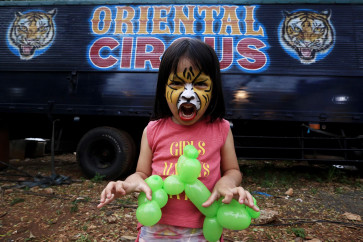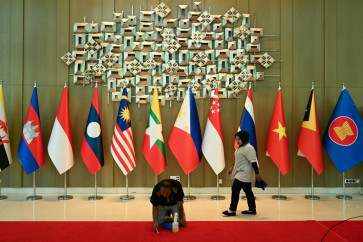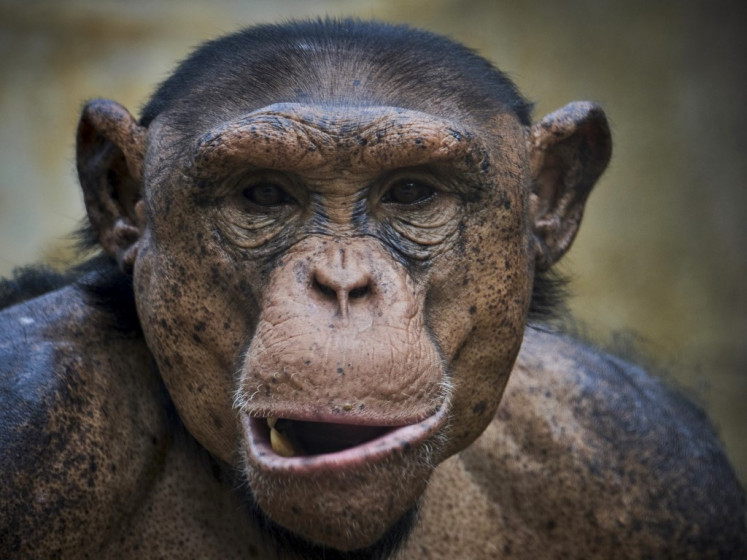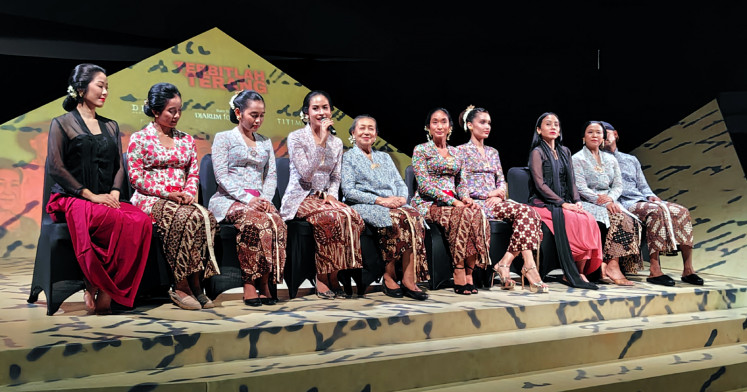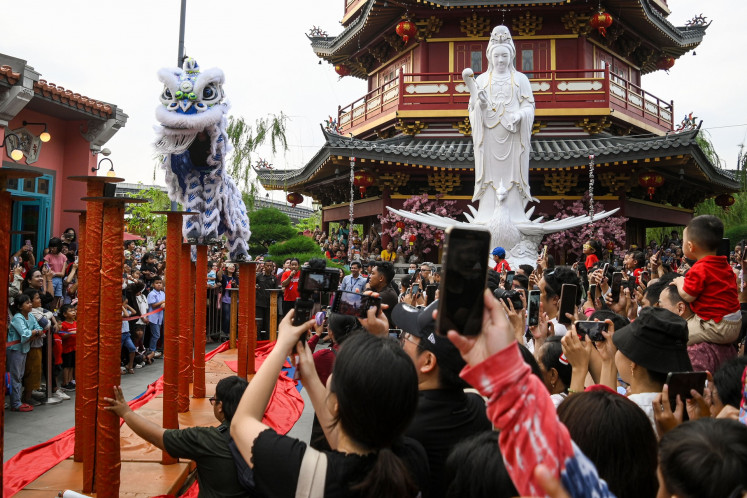Panji folklore stands at socio-cultural crossroads
The folklore of Panji has become an immense narrative set against the backdrop of Indonesia’s vast history.
Change text size
Gift Premium Articles
to Anyone
 Past leader: Indonesia’s fourth president, the late Abdurrahman “Gus Dur” Wahid, as painted by Sugihartono, is seen in art that represents the spirit of Panji Nusantara. (-/Nedi Putra AW)
Past leader: Indonesia’s fourth president, the late Abdurrahman “Gus Dur” Wahid, as painted by Sugihartono, is seen in art that represents the spirit of Panji Nusantara. (-/Nedi Putra AW)
T
he romance story of Panji Asmarabangun and Dewi Sekartaji, widely recognized as originating in East Java, has spread throughout Indonesia and even further to Malaysia, Thailand, Cambodia, Myanmar and Laos, appearing in diverse artistic manifestations.
The widespread distribution of the Panji lore is inseparable from its popularity during the era of the Majapahit Kingdom, during which the story was carved onto reliefs on numerous temples.
Visually, the Panji tale is often depicted in wayang beber (painted scrolls) and wayang topeng (masked dance).
In the present day, the Panji story remains relevant as it concerns the elements of ibu pertiwi, or the motherland, with its noble values. This narrative can be reinterpreted by incorporating the national issues of today.
Such translations are on display during the sixth Fine Arts Exhibition (PBSR) organized by the Education and Culture Ministry at two venues; the Graha Pancasila Building at Batu City Hall and the hall of the Batu mayor’s official residence in Batu, East Java.
The exhibition features the works of 101 visual artists from Java and Madura islands in an attempt to present the latest artistic achievements of those regions.
Under the theme “Panji Sebagai Penguat Karakter Bangsa” (Panji as a strengthener of national character), the exhibition, which lasts from Sept. 15 to Oct. 11, depicts the story in variations mediums such as paintings, installations and even contemporary audio visual works.
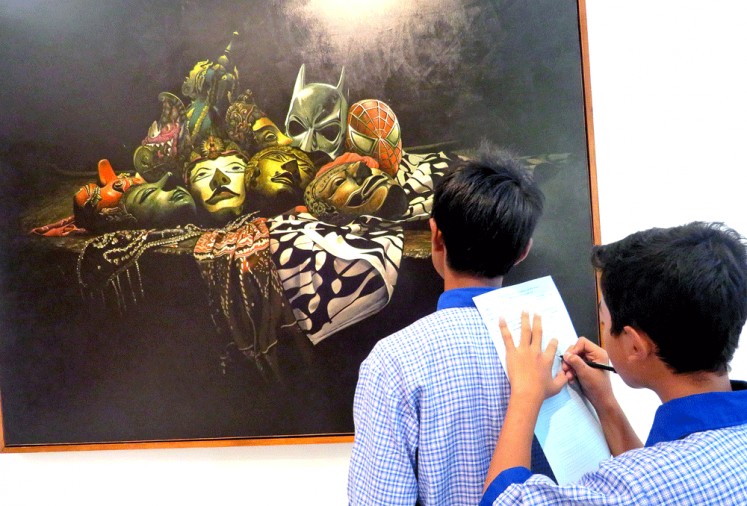
Co-curator Asy Syams Elya Ahmad said some of the artists’ primordial concept of Panji was the real challenge.
“Their thematic responses mostly still centered around traditional models,” Syams said.
Therefore, Syams and chief curator Djuli Djatiprambudi provided conceptual and thematic input for the artists from July to early August, challenging them to re-interpret the Panji tale and translate it to the contemporary era.
According to the fine art lecturer from Surabaya State University, the artists were eventually able to produce Panji-based works with heterogeneous creativity, in terms of their dimensional perspectives, structural characters, technical explorations, media, esthetic idioms and personal features. The artists’ different socio-cultural backgrounds also allowed for broader explorations.
Sugiyo from Tulungagung, East Java, for example, presented his work Panjikosmos, which represents the lore’s values and realities in diverse forms on 385 stones weighing 2 quintals, laid on a round table with a diameter of 2 meters.
Abdul Rokhim from Batu expressed his anxiety about the lack of concern over the nation’s culture through a painting titled The Last Mask. The combination of the Panji mask with Batman and Spiderman offers a critique of the alteration and erosion of local culture by foreign culture in an era of rapid advancement in communication and information technology.
The same phenomenon in agriculture is also critically perceived by the artists, such as Bambang AW from Malang and Gelar Soemantri from Tangerang, Banten. Bambang and Gelar picked Dewi Sri, a mythical goddess associated with the origin of paddy, in their own interpretations and portrayals.
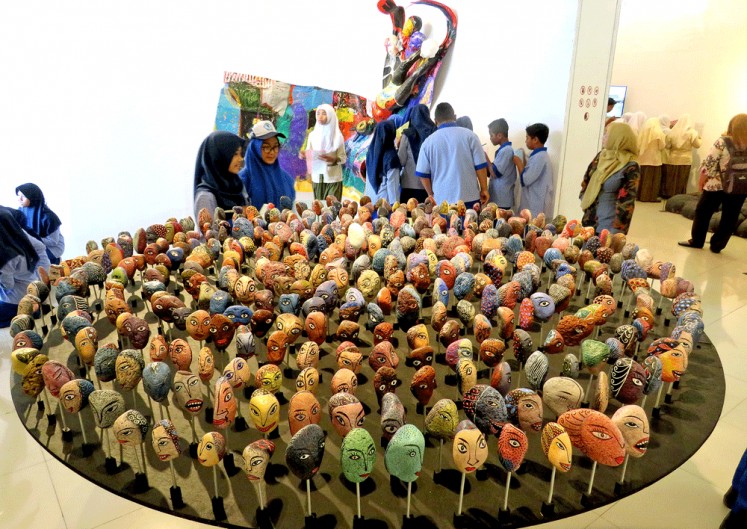
Bambang showcases a satirical installation titled Sri Hamil, which displays a statue of paddy-haired Dewi Sri during pregnancy, while Gelar’s unique work comprises a rice cooker and LCD monitor broadcasting news under the title Sri Magic and the 2nd Myth, depicting how technology has made human life easier in all matters including rice cooking.
Many artists also delved into constructive concepts.
Deddy PAW appeals to men to become present-day Asmorobangun through The Spirit of Panji: Spreading Love to the Whole Archipelago. The artist, who is based in Magelang, Central Java, exhibits a life-size fiberglass and stainless steel statue of Panji taking care of Dewi Sekartaji, a personification of the Motherland.
Grace Tjondronimpuno, also from Magelang, depicts Panji’s spirit by means of mixed media and lighting to illustrate youths erecting large rocks to form the word Indonesia.
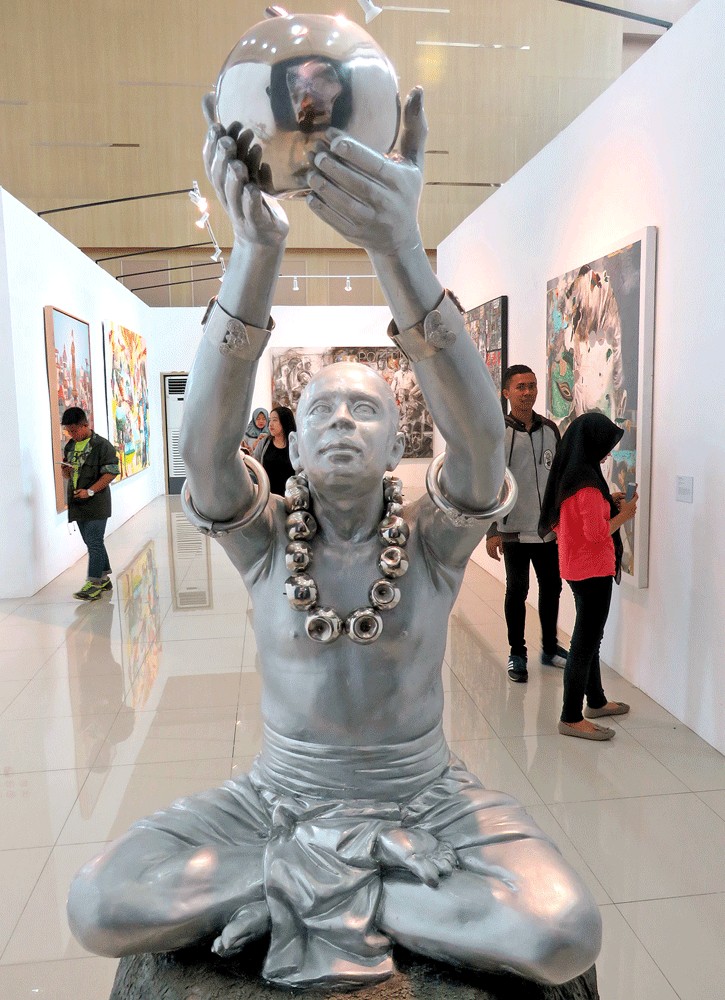
Tamar Saraseh from Sumenep, Madura, reflects Panji’s creative and persevering personality through his painting, whereas Sugihartono from Gresik in East Java casts Indonesia’s fourth president, the late Abdurrahman “Gus Dur” Wahid, as a national figure inheriting the spirit of Panji Nusantara.
For Syams, the sixth PBSR was the biggest event so far in its coverage of artistic creations and said he was also surprised by the tremendous interest shown by the public, especially students.
“I’m sure 85 percent of the messages conveyed will be absorbed and that this exhibition will also prompt teachers to learn more about Panji and increase their understanding of fine art,” he said.
Syams also expressed appreciation for the support of the regional administration, which had made the realization of the exhibition and its promotion of art among the youth possible.
“Hopefully our fruitful cooperation with Batu city can be maintained for events in the coming years,” he said.

